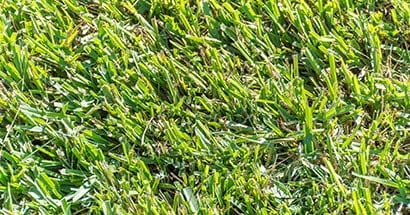Centipede Lawns

Centipede grass is a slow-growing, coarse-textured, warm-season turf that is adapted for use in low maintenance situations. It is often referred to as “lazy man’s grass” due to its infrequent mowing and fertilization requirements. It also has a light-green color and spreads by stolons. It does not tolerate traffic, compaction, high pH, excessive thatch, drought, or heavy shade.
Custom Centipede Lawn Maintenance Program
Centipedegrass Lawn Maintenance Calendar
NOTE: Don’t be fooled by competitors offering 8-10 round applications. If you use quality products, you do not need as many applications. This is our basic service program. There are other beneficial services, such as core aeration, lime, grub control, soil testing, etc.
Centipede Grass FAQs
When should I fertilize Centipede grass?
Centipede grass is known for its low maintenance, especially its mowing and fertilization needs. Centipede grass typically needs only 1-2 fertilizer applications, when temperatures are consistently above 65°F.
What’s the best fertilizer for Centipede grass?
Fertilizer composition can vary depending on your grass type and lawn. For Centipede grass, overfertilization can easily happen without conducting a soil test beforehand. If your soil requires fertilizer, we recommend one with moderate levels of nitrogen and potassium.
When’s the best time to water Centipede grass?
Like other warm-season grasses, Centipede grass will need 1 inch of rainfall every week. If rainfall meets or exceeds 1 inch, no additional irrigation is necessary.
Does Centipede grass go dormant?
Centipede grass is unique compared to other warm-season grasses in the sense that it may not enter a full dormancy period. You may find green leaf tissue in the protected leaf mass or canopy.
Does Centipede grass grow in the shade?
Centipede grass will need a minimum of 6 hours of full sunlight. Centipede grass is not tolerant of heavy shade conditions.
Why does my Centipede lawn look yellow?
There are a variety of reasons why your lawn appears yellow, including any of the following reasons:
- Disease
- Improper sunlight
- Lack of moisture
- Damage from high traffic or other stressors
Getting to the source of your yellowing lawn is a critical step in its treatment and recovery. Contact Barefoot Lawn Care today so we can address any of your concerns!